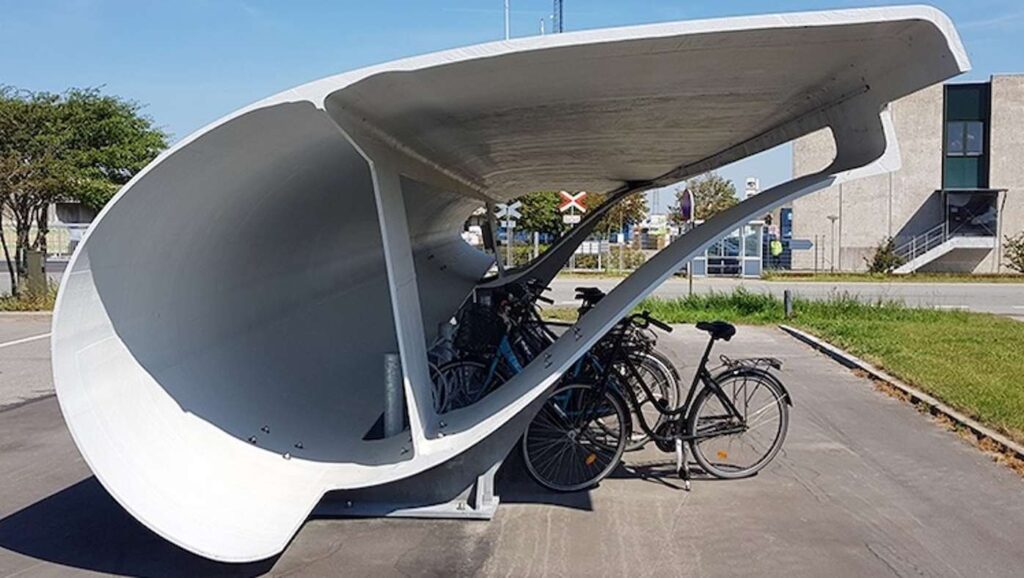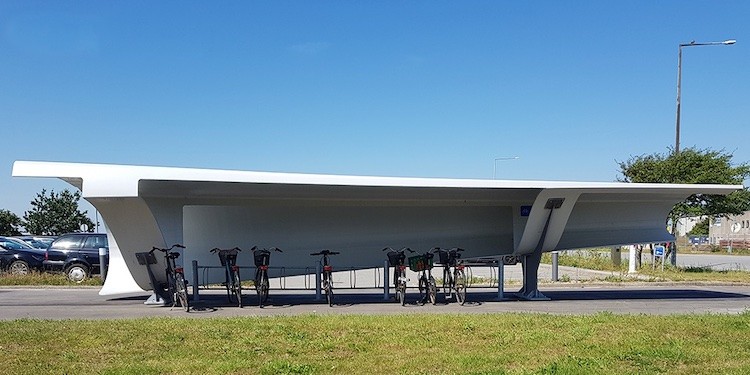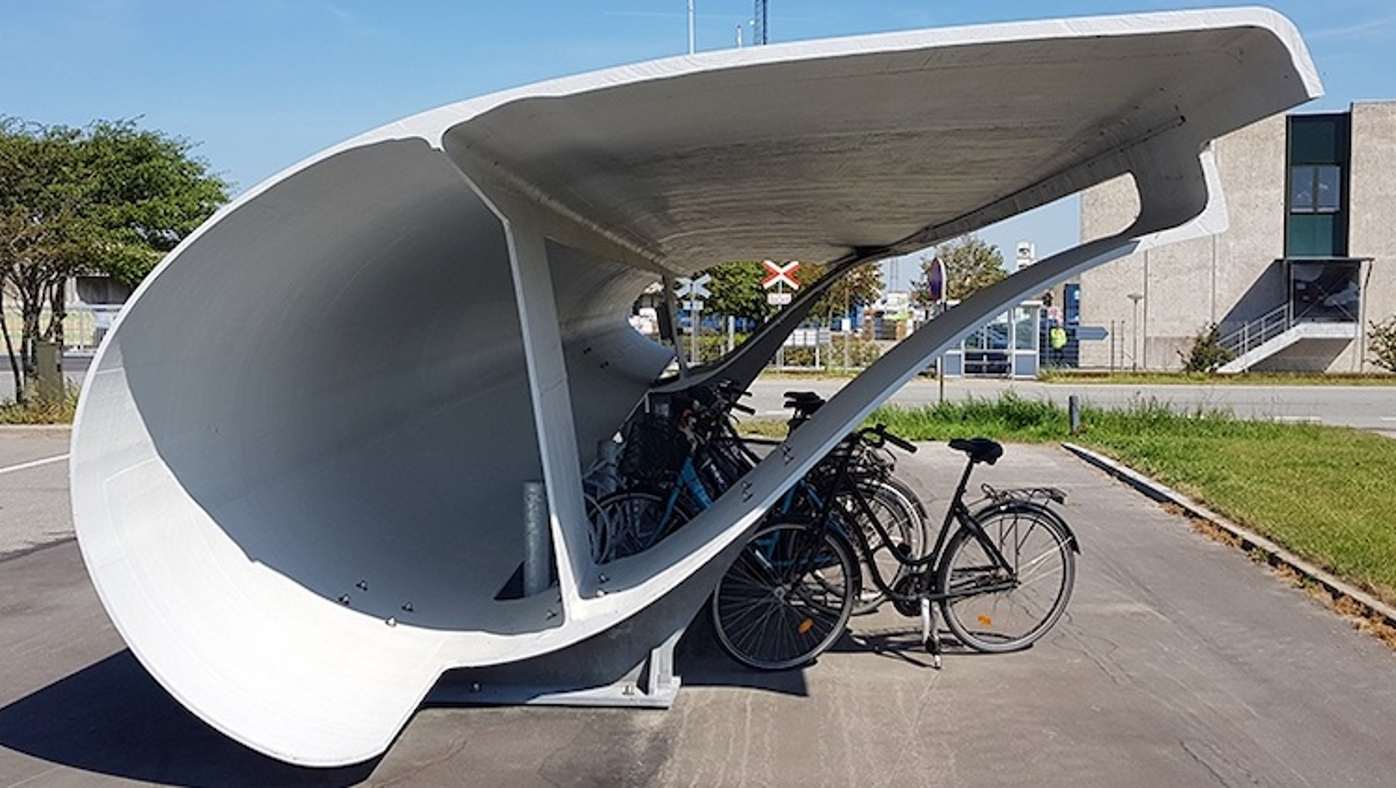
Looking to combine their passion for cycling and environmentalism, the always eco-thinking Danes are taking their old wind turbine blades and upcycling them into bike shelters.
90% of the population owns a bike. Furthermore, a third of all Danes ride a bike to work at least one time a week, while a quarter of all trips less than 3.5 miles are by bike. With so many cyclists, bike lockup shelters are a much needed feature of the Danish city and townscape.
Turbine blades must endure serious forces contending with the wind, and the first and second generation turbines featured blades made of advanced composite materials like fiberglass, foams, and resins.
This makes them impossible to recycle, and for some years as early wind turbines are gradually having more and more blades decommissioned, warnings about the impending waste have been growing.
Far from the polluting species we were in the past, methods for recycling the unrecyclable turbine blades are already being hypothesized by scientists and advocates like those at Re-Wind Network—who see the approaching 40 million tons of unrecyclable turbine blades as an opportunity.
MORE: Steelworkers Union is Helping Turn Massive Abandoned Steel Mill into Producer of Wind Turbines
This advocacy group has published papers in several journals looking at how the rigid blades can successfully be deployed in a wide variety of construction and infrastructure projects, from the aforementioned bike shelters which they constructed in Aalborg, to structural reinforcement, pedestrian footbridges, and traffic guard rails.

In one instance, they found a 100-meter wind turbine blade could be used as roofing material for a 40 square-meter home.
In another they found that a C96 wind turbine blade’s resistance to torsion, shear, bend, and other effects from ice, extreme wind, fire, and vehicular collision meet the safety requirements for a powerline support pole.
Siemens Gamesa, a major international supplier of wind turbines, have announced their new blades will be fully recyclable.
RELATED: Retired Wind Turbine Blades Get Turned into Bridges and Reinforced Concrete
“The time to tackle climate emergency is now, and we need to do it in a holistic way. In pioneering wind circularity—where elements contribute to a circular economy of the wind industry—we have reached a major milestone in a society that puts care for the environment at its heart,” states Andreas Nauen, CEO of Siemens Gamesa.
Evidently the need for groups like Re-Wind Network will be limited, but it’s a testament to the growing maturity of society at large that just because something is new and innovative, the impact it has on the environment will surely be measured.
POWER UP the Good News; Share This Story…





















That is such a smart idea!